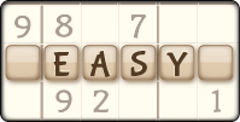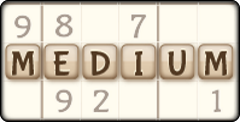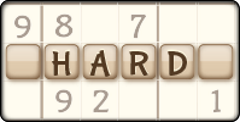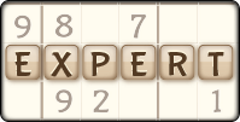Sudoku 247 - How to Play Sudoku
Sudoku has a long history that dates back to 1783, though its modern origins are more recent in the 70s. It has rapidly become one of the most popular games for people to play when they want to pass the time. A game of Sudoku can take anywhere from under a minute to half an hour (or more) depending on your skill level. If you’re armed with infinite games of Sudoku, then it’s virtually impossible to be bored!
At 247 Sudoku, we provide online Sudoku games whenever you need them. Simply hit “Play” and you’ll be thrown into a game. Repeat this as often as you like to pass the time when you’re bored or waiting for your train or plane to arrive. Most people will recognize a Sudoku grid when they see one - but do you know how to play it?
This guide will teach you how to play Sudoku at 247 Sudoku - we’ll cover the basics as well as some killer strategies to help you win more consistently (and a lot faster!).
How To Play Sudoku - Understanding The Basics
The first thing to know about Sudoku is the basic setup of the game. Every game will be played on a grid consisting of nine big squares. Inside each square, you’ll find a mini 3x3 grid of nine total boxes. It means the whole grid itself will have 9 small boxes across and 9 small boxes down. That makes 81 total boxes - and the aim of the game is to fill in every single box with a number.
Here’s a quick look at a typical Sudoku starting grid:
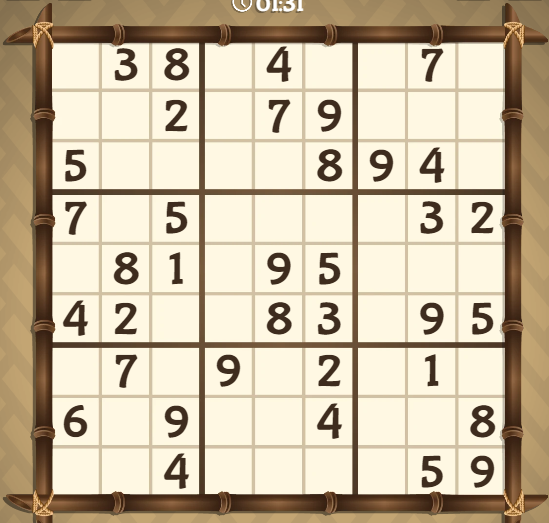
Every game starts with some of the boxes filled in automatically. The more boxes filled at the beginning, the easier the game will be as you have fewer empty boxes to fill by yourself. You’re not playing against anyone - it’s just you, the grid, and the timer. Part of the fun of Sudoku is solving this mathematical problem and the other part is doing it as quickly as possible to get better and better.
How Do You Fill A Sudoku Grid?
Looking at the image above, you’re likely wondering how you fill in the blank boxes. Unfortunately, you can’t just put any number in any box - there’s a logical puzzle for you to solve here:
- You can only use the numbers 1-9 throughout the grid
- Every big square section should have the numbers 1-9 in it
- Every column and row should also have the numbers 1-9 in them
- You cannot repeat numbers in squares, columns, or rows
A finished game of Sudoku will have a full grid of numbers. Every row will feature the numbers 1-9 in a specific sequence, as will every column. Each square will have 1-9 in a specific order too and there will be no overlap anywhere. It’s a real thing of beauty - and your goal is to reach this point as quickly as possible.
How To Play Sudoku at 247 Sudoku
Setting up a game at 247 Sudoku is incredibly easy. When the homepage loads up you’ll see a “Play” button on the screen. Click this and you’ll be shown four difficulty levels to cycle through:
- Easy - this has lots of boxes filled in with numbers from the beginning, giving you a nice head start.
- Medium - you get fewer boxes filled in than with the easy difficulty but it’s still well-balanced and not overly challenging for beginners and moderate-skill level players.
- Hard - your grid becomes more sparse and requires more effort and skill to fill in. We recommend this difficulty level if you’ve played Sudoku a lot and find the Medium difficulty too easy.
- Expert - our hardest difficulty level that’s reserved for the most astute Sudoku players. It has the fewest tiles filled in at the beginning, leaving you with a mountain to climb to complete the grid. Only choose this option if you’re breezing through the Hard grids and want more of a challenge.
Use the arrow buttons on the screen to pick your difficulty and then click on it to be sent into a game. All games are randomly generated here so you won’t get the same grid more than once. Such is the joy of Sudoku that you can have almost infinite possibilities when setting up a game!
Before your game begins, you’ll be shown a set of instructions explaining how to use 247 Sudoku:
- Select any empty square on the grid
- Pick one of the number tiles under the grid to fill that square
- Select any number on the board to highlight all of the same numbers (this is useful for seeing where certain numbers currently lie, helping you figure out where to make your next move)
- Click the pencil icon to switch to note-taking mode (this lets you place numbers around the grid without actually putting them down. It helps you see if your guesses are correct before you play a move)
These instructions will be shown at the start of every game unless you turn them off in the settings. To do this, hit the settings icon in the top left of your game (it looks like a wrench) and turn “Show Instructions” off. Other settings you can toggle are Board Animations or Allow Errors.
We suggest keeping the “Allow Errors” feature on when you start. It lets you place tiles incorrectly without receiving a time penalty. When this feature is off, you’ll add 15 seconds to your time with every wrong move. It’s a fun way to make the game more interesting when you start getting better at Sudoku.
Having this feature on won’t alert you when you’ve misplaced a number, but it will flag up any instances when you’ve got repeat numbers in a line, row, or square - as shown below:
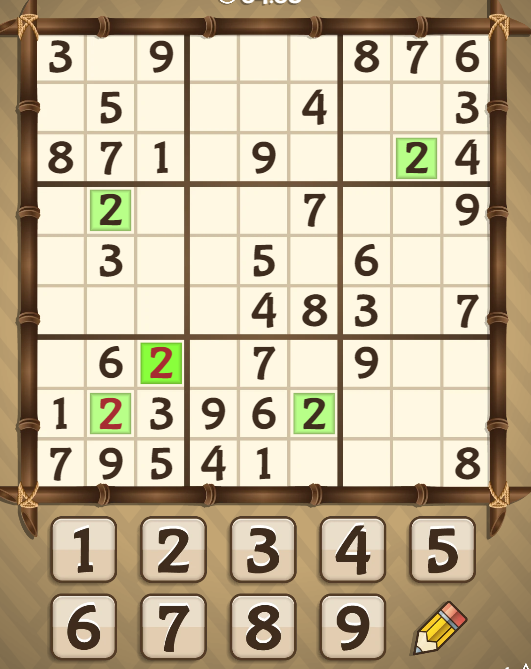
In this instance, you’ve got two 2’s in the bottom left square and two 2’s in the same row and line. The game has shown which 2’s are causing the problem by highlighting them in red. The benefit of this for newbies is that you’ll never get deep into a game and then realize you’ve made an error, causing you to go through the whole grid and see where you made your mistake. It’ll be flagged immediately, so you can quickly correct things without making your life harder!
To remove a number after placing it, simply click on the number again and select the same number tile from below. Again, looking at the example above, you can remove either red 2’s by selecting them and clicking the 2 below the grid.
Key Strategies & Rules To Help You Win Sudoku
The basics behind Sudoku are fairly simple to get your head around. It’s a 9x9 grid of 81 little squares and you need to fit the numbers 1-9 in each row, column, and section. In theory, this isn’t a hard concept to grasp - and yet it can be pretty challenging when you play for the first time.
That’s why there are some strategies and unwritten rules to follow that’ll help you fill your Sudoku grid (and fill it fast). Here are four things we encourage all Sudoku players to do:
Highlight The Numbers To Avoid Repetitions
We mentioned that this can be done on 247 Sudoku by clicking your desired number on the grid. Looking at the image below, you can see what happens when we choose the number 5:
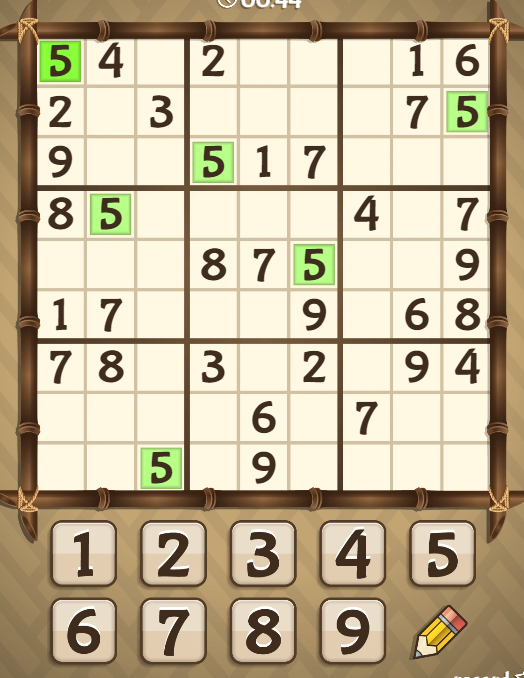
All 5’s on the grid are now highlighted in green, but what’s the benefit of this? It’s a quick and easy way of seeing where the 5’s currently lie. This way, you immediately know where a 5 can’t go. In Sudoku, the game is just as much about finding where things can’t go as it is discovering where they can.
The example above gives us loads of information we can use to our advantage. We can clearly see there’s a 5 in six out of nine sections. Therefore, we can’t put another five in those six sections and we know that at least one has to be placed in each of the remaining three sections.
Look at the bottom middle section and you have so much info to dictate where the 5 should go. It can’t go either side of the 9 as there’s a 5 in that row. It can’t go in the boxes below the 2 as there’s a 5 in that column. You also can’t put it below the 3 as there’s a 5 in that column. It leaves one possible choice - placing your 5 between the 2 and 3, above the 6.
We’ve managed this purely by highlighting the number 5 and seeing where all the 5s are on the grid. It’s such an easy way to get started - as well as being a great tactic when the grid gets fuller as it stops you from making obvious mistakes and repeating numbers in squares, rows, and columns.
Never Guess - Use Process Of Elimination Instead
What we’ve shown you above also bleeds into one of the biggest rules/strategies for Sudoku success: use the process of elimination instead of making guesses.
Guessing where numbers go on a Sudoku grid is a recipe for disaster. You might get one right - you may even get two or three correct - but you’ll never complete the grid by making guesses. The process of elimination will help you figure out where to place the numbers by ruling out all other possibilities.
Carrying on from our example above, what happens to the grid when we place the 5 between the 3 and the 2 in the bottom-middle square?
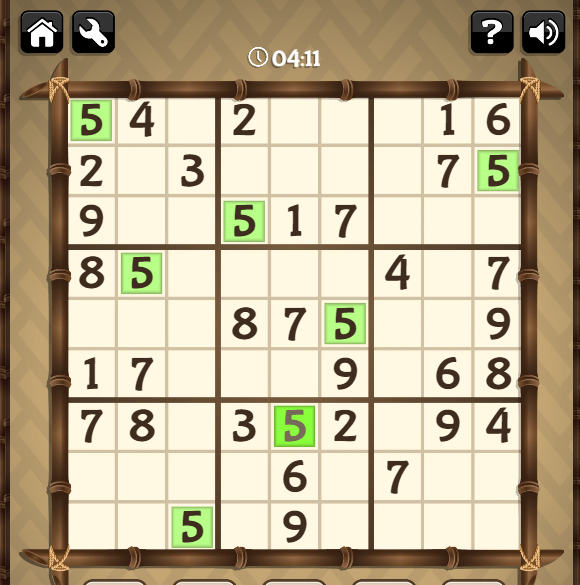
We’ve kept the 5s highlighted to make things easier, but adding this number in its box suddenly paves the way for another 5 to be positioned in the bottom-left box.
We know a 5 has to go in that box somewhere, and before we placed the 5 above, all we knew was that the bottom-right box couldn’t have a 5 below the 4, nor could it have one in the bottom row.
This left the box beneath the 9 and to the left of the 9 as possible options. It’s a 50/50 shot at guessing the correct placement of the 5, but in figuring out where the 5 goes in the bottom-middle box, we’ve used the process of elimination to reveal the true positioning of the 5 in the bottom right.
It can’t go next to the 9 as there’s now a 5 in that row. Instead, it can only go beneath the 9 - as shown below
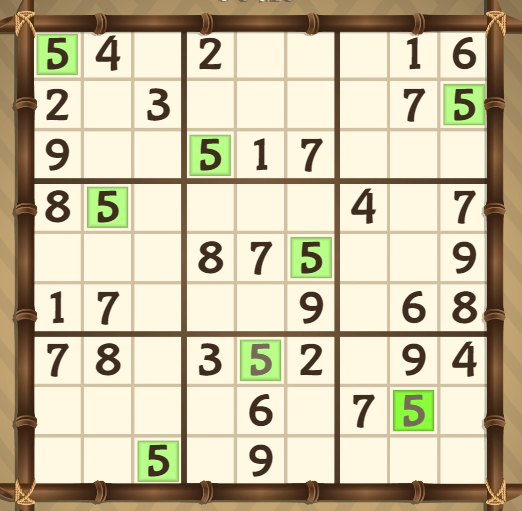
You should use the process of elimination to figure out where numbers should go based on where they can’t go. It’s a great way of placing some numbers early on and fleshing out your grid. Usually, when you place one number, it becomes obvious where another one can go.
For example, looking at the grid above, we now know the placement of the final 5 on the grid. It has to go to the left of the 6 in the middle right square! The 5 in the bottom-right square means there can’t be one above the 6, and the 5 in the middle square means there can’t be one in the boxes to the left of the 9. It leaves one box open for a 5 - and you’ve now found every 5 on the grid, giving you one less number to worry about.
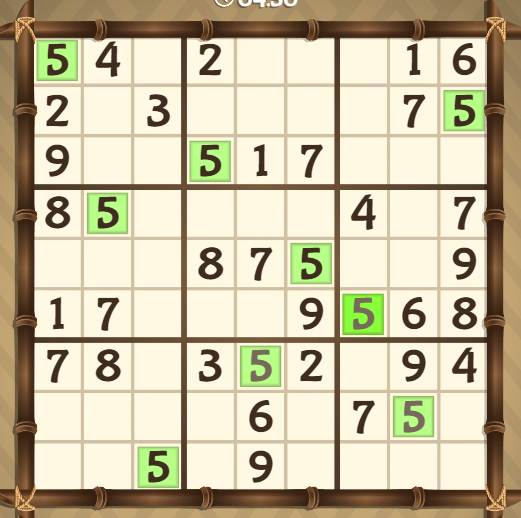
Make Notes If You’re Unsure
The process of elimination will take you far in Sudoku, but there will be times when you’re unsure if a number fits in a space or not. You scan the grid and discover that two numbers might fit into a small box.
If you’re unsure about anything, use the note-taking feature at 247 Sudoku to try moves out. Click on the pencil and it lets you select any box and place as many numbers as you want in it while you work on a solution.
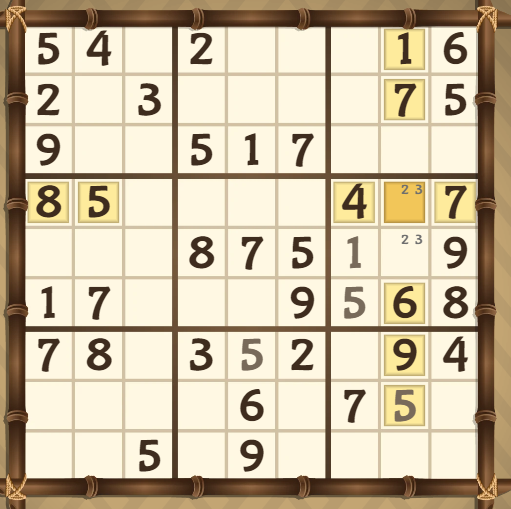
We’ve done this with the middle-right square as we know only two numbers are needed to fill it: 2 and 3. However, at this current point in time, we don’t know where either of them will go. So, the notes feature reminds us that 2 or 3 can go in either of the remaining boxes.
As we continue working our way around the grid, we can make more notes and proper moves. The great thing about 247 Sudoku is that it removes your notes when one of the numbers can no longer theoretically fit that spot.
From the screenshot above, we placed a few more numbers around the grid using the process of elimination. We eventually figured out where the 2 and the 3 fits in the middle square, which now helps us see where the 2 and 3 go in the middle right square.
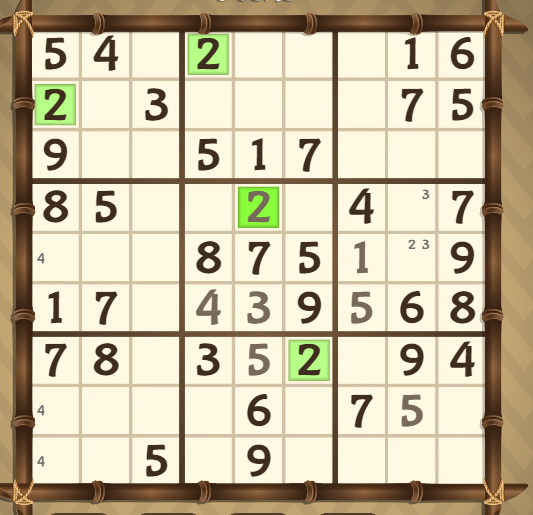
Because there’s a 2 in the top row of the center square, our notes in the middle right square have automatically changed. One box still has a 2 or 3 in it - but the other only has a 3. This means it’s only possible for a 3 to go there, so we know that the 3 has to be placed in that position with the 2 below it.
Always Find The Easiest Solutions First
Lastly, you should always look for the easiest solutions first. We’ve done this through our examples - remember when we highlighted the 5s in the beginning? This wasn’t done by chance - we highlighted all the numbers first and decided to work on solving the 5s because it offered the easiest solutions. It gave us an obvious placement because there was no other place for a new 5 to go.
You’ll always find solutions like this in Sudoku, especially at the start. There is almost always one number that can only be placed in one box based on how the grid is set up. Look for this - and then continue looking for easy and obvious solutions after. You can usually always get a quick number or two after placing a new number as certain possibilities get canceled out.
Play The Daily Challenge At 247 Sudoku
Sudoku is largely about challenging yourself and seeing how much faster you can get at solving the grids. However, we give you the chance to compare your talents with everyone else who plays 247 Sudoku!
There’s a Daily Challenge every day that you’re automatically entered into when you play a game. The concept is simple: try to finish the grid as quickly as possible and see where your time lands on our daily leaderboard. It’s a fun way to make Sudoku a bit more competitive - and to give yourself something to aim for.
Who knows, with the tips and strategies in this guide, you might fight your way to the top of the leaderboard for one of our Daily Challenges in the future!
247 Sudoku Strategy
- Every row, column, and 3x3 box contains the digits 1 to 9 only once on the sudoku board!
- Sudoku has many difficulties, all offered on 24/7 Sudoku!
- Use logic to solve this fun sudoku puzzle!
- Find 24/7 Sudoku on all your devices -- including your computer, phone, and tablet!
Sudoku Levels
Seasonal Sudoku Games
More Games
Sudoku News
Disclaimer
DISCLAIMER: The games on this website are using PLAY (fake) money. No payouts will be awarded, there are no "winnings", as all games represented by 247 Games LLC are free to play. Play strictly for fun.


